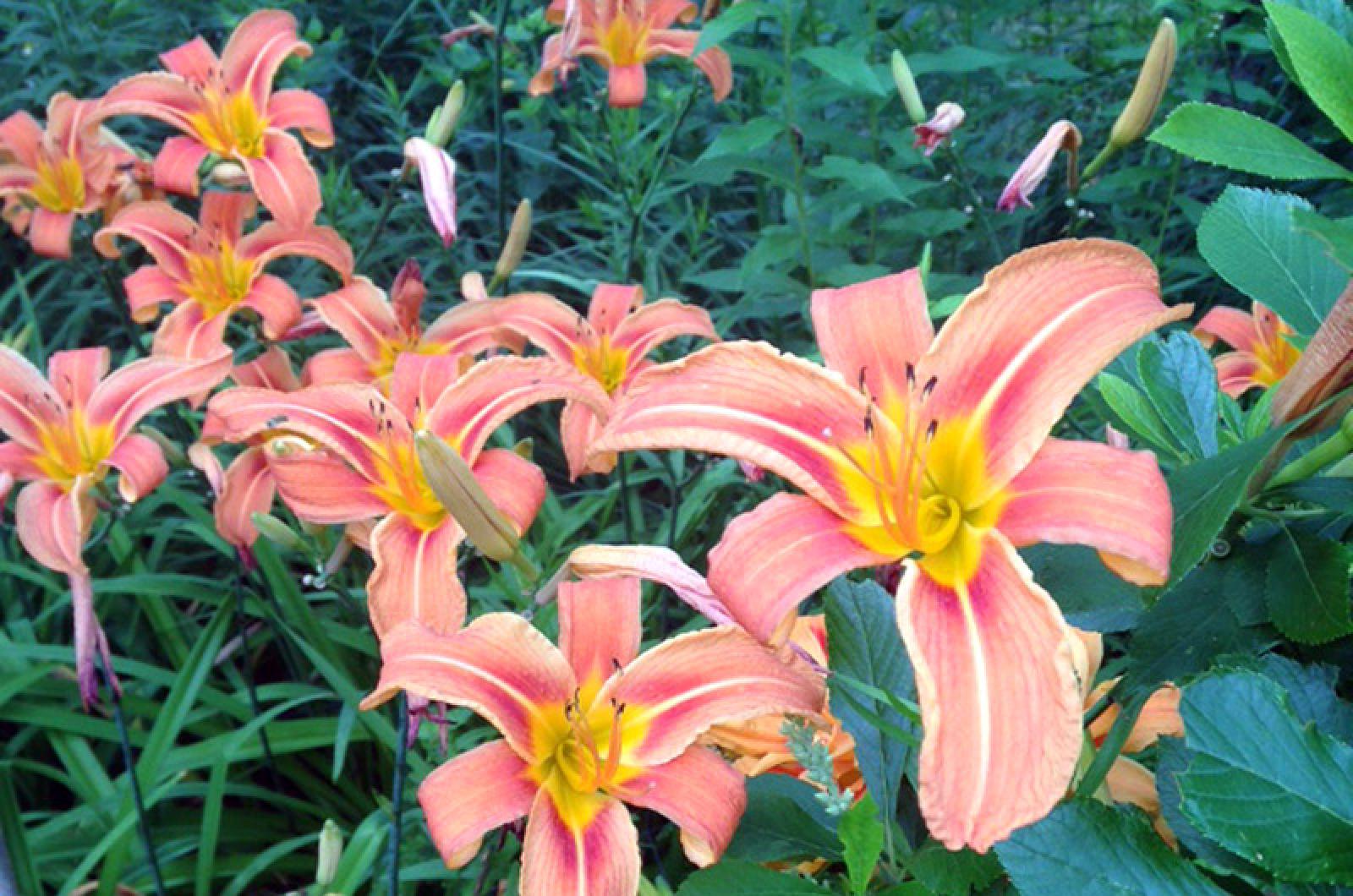After a lifetime of study, American botanist Dr. A.B. Stout had this to say about the subject of his research: “With daylilies, We have done, What we leave done, Now we are done, With daylilies.”
Mr. Stout was known as the “father of modern daylilies,” having spent much of his life working with these iconic flowers. His successful breeding program created 50,000 crosses of the very versatile daylily.
His and other cultivar creations adorn the domestic landscape, though there were only two early botanical immigrants that inspired Mr. Stout’s imitations. Orange and yellow daylilies, Hemerocallus fulva and Hemerocallus lilioasphodelus, respectively, originated in Asia and crossed the Atlantic during the 17th Century. These hardy and easy-to-grow flowers were the beautifying choice of pioneers.
Known as the ‘perfect perennial,’ daylilies were revered for their ease of care, ability to thrive in a variety of temperatures, climates and soils, drought tolerance, and long bloom period.
The latter quality is an irony since a daylily flower blooms — as the name implies — for only a day. Its genus, Hemercocallus, translates to “day beauty.” Longevity is achieved through the many flower buds on many stalks of a single daylily plant. So a flower will bloom in the morning and wither the next evening, though there will be many others to take it place, providing weeks of blooming lilies.
Another singularity is the word daylily. Though reflex suggests two words, ‘day’ and ‘lily’ separated by a space, the reality is the single word, ‘daylily.’ This has not always been the way to refer to this group of plants. It was only in 1923, at the recommendation of the American Joint Committee of Horticultural Nomenclature, that two words became one.
Perhaps the most intriguing aspect of the orange daylily is its edibility. If you plan on partaking, be sure that you have Hemerocallus fulva and not one of the many cultivars, as the cultivars are not all edible.
One of the first considerations of anyone wishing to sample them must be the source of the plants: chemicals or water runoff can affect them. Taste a small amount first, as those with sensitivities may be susceptible to stomach upset. Don’t ever share your daylily meal with your cat — these plants are toxic to felines and may even be deadly to them. And, finally, leave the wild wood lily off your lists of wild foodstuff, as it is not common enough to consider harvesting.
As long as you observe the precautions above, many parts of the orange, or common, daylily can be used for food at different times during the plant’s development. In the spring, cut the shoots (when they are less than eight inches tall) just above soil level and use them in a stir-fry or as sautéed greens. Green, firm buds can be steamed, boiled, fried and even pickled. The showy flowers are fine, commonly used in Chinese cuisine. Or try them in salad or soups. Lastly, don’t forget the root. Underground tubers can be trimmed selectively so that the plant will survive. These tubers can be cooked like potatoes and need not be peeled. Daylilies are healthy, too. The buds contain more protein and Vitamin C than green beans and asparagus. So no matter how your slice them, you can get your daylily allowance.
With such a cornucopia, there is little reason (save a wandering cat) to exclude them from your yard or your dinner.
Suzan Bellincampi is director of the Felix Neck Wildlife Sanctuary in Edgartown, and author of Martha’s Vineyard: A Field Guide to Island Nature.




Comments (1)
Comments
Comment policy »